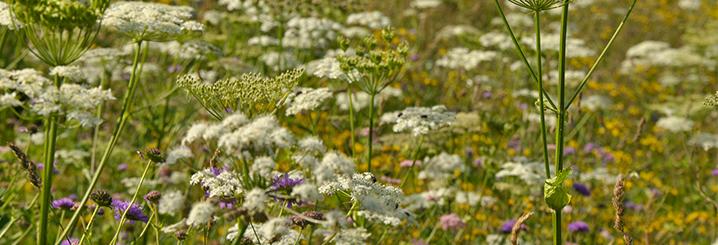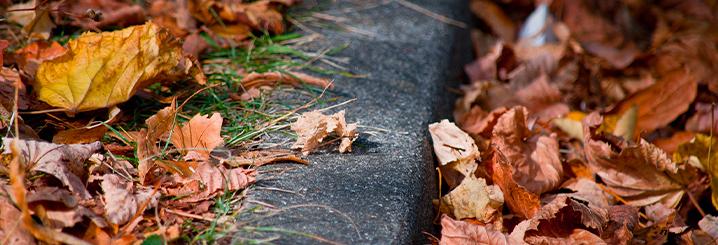Make your own pond in simple steps

Would you like to build an ornamental pond in your garden, with water lilies and lotus flowers? Or perhaps populate it with fish, such as colourful koi carp? Or would you like to create a small oasis for the fauna that lives around your property in the countryside?
To make your own garden pond, you have various options from a technical point of view. The most common solution is to dig a hole and install a pre-formed plastic tub, or spread a waterproof sheet that will prevent the water from dispersing into the ground. If the soil in your garden is clayey—i.e. not very permeable—it may be sufficient to dig out a basin-shaped hole without needing to waterproof it. If, on the other hand, you’d rather not dig a hole in the ground, you can opt for an above-ground structure that you place directly on the lawn.
In this article we will find out how to make a DIY inground pond lined with plastic sheeting. It's a handy solution that gives you the freedom to fully customise the shape, size and depth of your artificial pond.
Designing an artificial pond
Before you start installing anything, it makes sense to design your project on paper, in order to avoid problems in the construction phase: we talk about this in our article on do-it-yourself garden design. First decide where to site your garden pond. It is better to place it away from trees and shrubs, where it might be damaged by roots and filled with leaves, flowers or fruits (which, if not collected, will decompose in the water and promote algae growth). To clear your garden and remove anything that could foul the pond, use a rake or blower.
When excavating for your pond, also pay attention to what you might find in the subsoil: roots of living plants (keep them intact), utility pipes or garden irrigation pipes, etc. The pond should be placed in a sunny spot, in full sun all day long or for at least half of the day (i.e. exposed to the southeast, south or southwest): if your project includes aquatic plants, plenty of sunlight will be necessary for them to survive.
Choose the shape of the artificial pond: geometric or curved? A rounded shape with no corners is more natural and makes it easier to lay out the waterproof sheet, besides minimising the possibility of miscalculations. Ensure that the dimensions of your DIY pond are proportional to your garden spaces and surrounding elements (flower beds, driveway, vegetation etc.). Here are some ideas for creating a zen garden with characteristic water features.
The depth should not be excessive or too shallow: it depends on how you organise the pond, i.e. which aquatic plants you want to plant. With a maximum depth of 80 cm you can add water lilies and submerged (oxygenating) aquatic plants, which need about 60 cm of water (assuming that the water surface does not reach the edge of the pond, but is 15-20 cm below ground level). If along the perimeter you create a step measuring around 50 cm high above ground level, you can also have marsh plants, which need about 30 cm of water. A pond with the correct dimensions and depth will create a stable environment that is protected against seasonal temperature fluctuations: this benefits the health and wellbeing of any fish that will inhabit it, as well as preventing algae from proliferating.
If you have decided to create a green margin of herbaceous plants around the pond, you can prepare the soil for the plant beds with the help of a rotary tiller. If you want to set up an area for relaxation, take a look at how to build a DIY gazebo.




What you need to make a DIY pond
Once you have drafted your garden pond design, obtain the necessary materials (the quantities will depend on its size):
-
300 g/m nonwoven fabric2
-
Black pond sheeting, at least 0.5 mm thick
-
Pond edging material: pebbles, stone slabs, wooden boards, bricks or other decorative elements (consider what materials and colours are already present in your garden).
-
Overflow pipe
-
Other, depending on your design: cleaning and oxygenation system with pump and filter, aquatic plants (which can naturally filter, purify and oxygenate the pond water), fish etc.
To calculate the dimensions needed for the nonwoven fabric and the PVC sheet, calculate twice the maximum height of the pond, then add the maximum length of one side, plus an 80–100 cm safety margin; do the same for the other side. For the PVC sheeting, round up the result and compare it with the dimensions of pond liners available on the market.
Here is a generic list of equipment for making your own garden pond:
-
Short tape measure, long tape measure, etc.
-
System for demarcating the perimeter of the hole: depending on its shape you can use a rope, hosepipe, sand or wooden planks
-
Spade
-
Hoe
-
Rake
-
Spirit level
-
Pebbles, bricks or other weights to hold the PVC sheet in place as you lay it
-
Pruning shears, craft knife or scissors
-
Water pump or hosepipe to fill the pond


How to build a garden pond
Once you have worked out the design, prepared the materials and equipment—you can transport everything with a wheelbarrow, or more comfortably with a transporter—here are the steps you should follow to make your DIY garden pond. First, clear away any grass and vegetation from the designated area using a brushcutter:
-
Mark out the pond’s perimeter based on the designed shape and the measurements you worked out.
-
Dig the hole using a spade: if you plan to have a range of shelf depths, excavate each level, digging deepest where you want the lowest areas. The basin walls should be sloped rather than vertical.
-
Get rid of stones, root remains etc.—we recommend using a hoe for this—and level out the shelves with the rake.
-
Check that the banks of the pond are roughly level by measuring them with a spirit level placed on a wooden plank.
-
On the bottom of the DIY pond, lay the nonwoven fabric: this will protect the PVC from roots, sharp stones or anything else that could puncture it.
-
Spread out the PVC sheet so that it closely adheres to the bottom and walls of the basin, with as few folds as possible.
-
Secure your pond liner at the edges with weights, which you can later remove and reposition as it adheres to the walls of the hole.
-
Start filling your artificial pond with water: this will help to spread out the sheet. If you want to avoid wasting tap water, you can use a water pump to fill the pond with rainwater collected in a water butt.
-
Cut off the excess sheeting, leaving a 40–50 cm margin around the entire perimeter from the edge of the pond.
-
When the basin is filled, secure the sheeting around the edge using stone slabs, bricks or other decorative material, both to camouflage them—so that they are no longer visible—and to create a nice finish.
-
Finally, install the overflow pipe just above the water surface, to drain excess water in the event of heavy rain.



